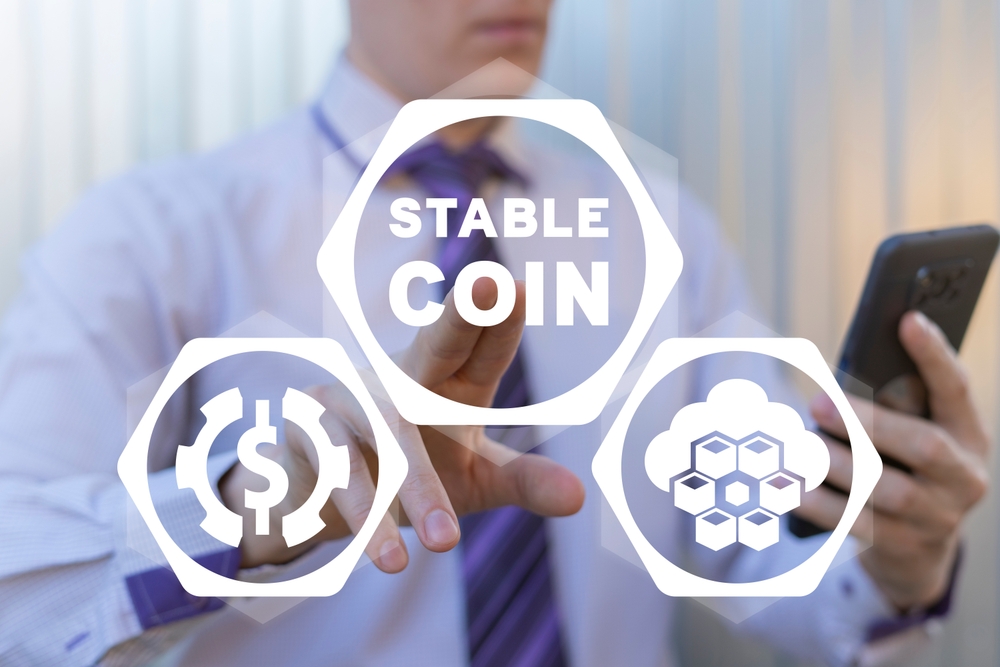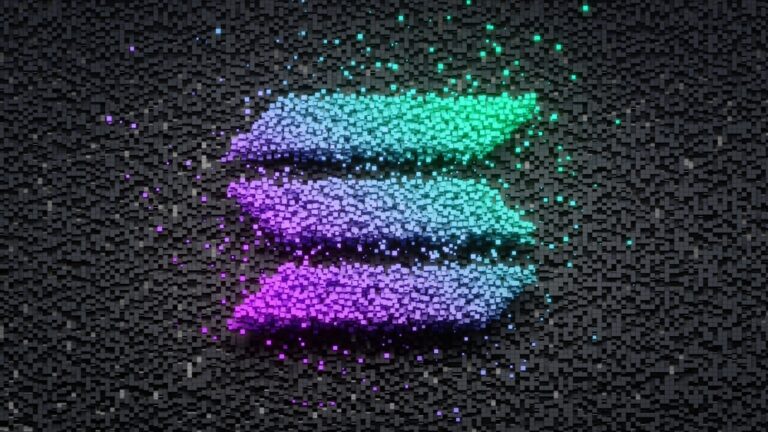Table of Contents
ToggleIntroduction
NEAR Protocol is an emerging player in the blockchain technology space, designed as a decentralized platform that aims to provide an environment for scaling and developing decentralized applications (DApps). Drawing inspiration from existing solutions, NEAR’s unique selling proposition rests on its novel sharding mechanism called ‘Nightshade’, which optimizes both processing capacity and speed across its network. This approach not only enables NEAR to handle high volumes of transactions but also ensures the network remains secure and decentralized.

The platform places a heavy emphasis on developer and user experience by striving to make the process of building and interacting with DApps as seamless as possible. NEAR utilizes user-friendly account models and human-readable account names to enhance usability. Additionally, it fosters a supportive ecosystem for developers and entrepreneurs, providing them with various toolsets and resources, which encourages the creation and deployment of innovative applications. This supportive environment is supplemented by NEAR’s economic model that is designed to incentivize various stakeholders, including developers and users, which further aligns with its vision of a collaborative and accessible network.
Key Takeaways
- NEAR Protocol’s ‘Nightshade’ sharding mechanism enhances transaction throughput while maintaining network integrity.
- The platform focuses on simplifying the development process and improving user experience for interacting with DApps.
- NEAR emphasizes a strong community and ecosystem support to drive innovation within the decentralized space.
Near Protocol Overview

Near Protocol is a scalable blockchain designed to provide the infrastructure for decentralized applications (dApps). It aims to address the limitations of older blockchains by offering high speeds and low transaction costs.
Core Concepts
Near Protocol operates on a proof-of-stake (PoS) consensus mechanism, which enables it to maintain high security and decentralization without the significant energy consumption associated with proof-of-work systems. The NEAR tokenserves as the primary medium for transaction fees, governance, and incentivizing nodes in the network.
Sharding and Nightshade
To achieve exceptional scalability, Near implements a unique sharding solution called Nightshade. Sharding is the process of splitting the network into multiple segments, allowing parallel transaction processing. Nightshade enhances this with a technique that partially processes and finalizes transactions within individual shards before reconciling them on the blockchain. This approach optimizes efficiency and maintains the continuity of the network.
Tokenomics
The tokenomics of NEAR are designed to align the incentives of all network participants. Validators are rewarded in NEAR tokens for their efforts in maintaining network integrity. The supply of NEAR tokens is a key economic driver within the protocol, with various mechanisms in place to manage inflation and reward distribution effectively. The token also facilitates various functionalities such as governance, where token holders can vote on proposals for network upgrades and changes.
Technological Foundations

The NEAR Protocol is defined by its innovative blockchain architecture and a proof-of-stake mechanism, which together enable a scalable and high-performance network.
Blockchain Architecture
NEAR Protocol employs a sharded blockchain structure, which is pivotal for enhancing the network’s scalability. Sharding is a process that divides the network into multiple portions, known as ‘shards’, each capable of processing transactions and contracts independently. This division allows for parallel processing, significantly increasing throughput and the network’s overall capacity.
- Key Components of NEAR’s Blockchain Architecture:
- Shards: Facilitate concurrent processing
- Chunk Blocks: Contain transactions for a specific shard
- State Roots: Assure integrity across the network
Performance aspects benefit directly from this sharding approach, as the workload is distributed, making NEAR particularly adept at handling high volumes of transactions.
Proof-of-Stake Mechanism
The NEAR Protocol leverages a proof-of-stake (PoS) model for network security and consensus. Validators on the network stake their NEAR tokens as collateral to endorse and produce blocks, with the likelihood of being chosen proportional to their stake size.
- Advantages of PoS Mechanism in NEAR:
- Energy efficiency: More sustainable than proof-of-work systems
- Lower barriers: Allows for wider participation in the consensus process
This PoS system is central not only to maintaining the security of the blockchain but also to sustaining its scalability and performance as it negates the need for energy-intensive mining operations used in conventional proof-of-work blockchains.
Smart Contracts and Development

In the landscape of blockchain technology, NEAR Protocol marks its distinction with a developer-friendly environment for smart contract creation and deployment, emphasized through its Rust-based smart contract framework and the contract-based account model designed to facilitate complex applications.
Rust Programming Language
Rust is a multi-paradigm system programming language that guarantees memory safety and offers high performance. It is the chosen language for smart contract development on NEAR Protocol because of its robust type system and ownership model which prevent bugs common in smart contracts. Developers leverage Rust’s features for writing reliable code that executes within NEAR’s blockchain.
- Safety: The language’s compile-time error checking ensures memory and thread safety, reducing potential vulnerabilities.
- Performance: Rust’s “zero-cost abstractions” promise that high-level language constructs do not impede low-level performance, an essential aspect of blockchain transactions.
Contract-Based Account Model
NEAR Protocol operates on a contract-based account model, distinguishing itself from the address-based model seen in other blockchains. In this model, accounts can directly hold smart contracts, and a single account can deploy multiple contracts.
- Account Flexibility: Allows for more intuitive user and developer experiences as accounts can resemble real-world entities with multiple contract interactions.
- Enhanced Capabilities: The model enables advanced functionality like upgradable contracts or contracts that control other contracts, thus offering developers a rich set of possibilities when designing decentralized applications (dApps).
The integration of the Rust language and the contract-based account model on NEAR Protocol provides a powerful foundation for developers to build the next wave of decentralized applications with confidence.
User Experience

In the landscape of blockchain technology, NEAR Protocol places a significant emphasis on user experience, focusing on both the NEAR Wallet and simple onboarding processes to enhance usability for end-users.
NEAR Wallet
The NEAR Wallet serves as a gateway for users to interact with NEAR Protocol’s ecosystem. This web-based application is designed with a clean interface and intuitive navigation, aiming to provide a frictionless experience. Security and ease of access are paramount, allowing users to confidently manage their assets without the need for extensive blockchain knowledge. Features such as account recovery options add an extra layer of protection, ensuring that end-users feel secure in their transactions.
Simple Onboarding Processes
NEAR Protocol strives to remove barriers to entry through simple onboarding processes. New users can create a NEAR account with just a few clicks—a stark contrast to the often complex and lengthy setups seen in other blockchain platforms. This streamlined approach prioritizes usability, with a focus on reducing time-to-first-transaction. By minimizing technical jargon and providing clear, step-by-step instructions, NEAR Protocol ensures that its platform is accessible to a wide audience, from crypto novices to seasoned investors.
Decentralized Applications (DApps)
NEAR Protocol has positioned itself as a promising platform for developing Decentralized Applications (DApps), leveraging its high-performance blockchain technology to support a range of use cases. These applications are designed to harness the security, transparency, and trustless nature of blockchain while offering a user-friendly experience to encourage widespread adoption.
Gaming and NFTs
The NEAR Protocol has become an attractive arena for gaming DApps that integrate Non-Fungible Tokens (NFTs) to create immersive and innovative experiences. These platforms enable secure ownership and trading of in-game assets, ensuring that players have true control over their unique digital items. Notably, the seamless integration of NFTs within games on the NEAR blockchain offers a dual benefit: enhancing the gaming experience while simultaneously providing a novel way for users to interact with digital collectibles.
DeFi Platforms
NEAR Protocol’s infrastructure is also deeply ingrained in the world of Decentralized Finance (DeFi). DeFi platforms on NEAR are engineered to promote financial inclusivity and democratize access to a range of financial services. They facilitate activities such as lending, borrowing, and asset trading without the intermediary of traditional financial institutions. This not only fosters greater financial sovereignty but also introduces efficiencies that reduce costs and transaction speeds for users.
Ecosystem and Community
The NEAR Protocol’s ecosystem is a thriving collective comprised of innovative structures and entities, orchestrated to facilitate decentralization and community engagement. These include the NEAR Foundation, a sovereign community cloud, as well as an array of decentralized autonomous organizations (DAOs) and guilds that bolster the ecosystem’s diversity and resilience.
NEAR Foundation
The NEAR Foundation acts as a steward of the protocol, dedicated to propelling the ecosystem’s growth and ensuring its sustainability. It offers support through funding, building a strong governance framework, and setting strategic priorities to align the community’s efforts with the protocol’s long-term vision.
Community Operated Cloud
The protocol’s Community Operated Cloud is a decentralized infrastructure where node operators are incentivized to contribute to the network’s security and performance. Unlike traditional cloud services, this community-led model promotes removal of central points of failure, fostering a resilient and scalable ecosystem.
DAOs and Guilds
DAOs and guilds form the backbone of the NEAR community, encouraging collective decision-making and active participation. DAOs focus on specific aspects of the ecosystem, while guilds help in community building by gathering like-minded individuals to create, innovate, and contribute to the ecosystem’s flourishing culture. Incentives are offered to drive engagement and galvanize community-driven development within the NEAR ecosystem.
Security and Network Integrity
The NEAR Protocol places a high priority on maintaining robust security and ensuring the integrity of its network through a carefully designed system of validators and staking mechanisms, along with rigorous transaction finality processes.
Validators and Staking
NEAR Protocol relies on a Proof of Stake (PoS) consensus mechanism which involves validators who are responsible for maintaining network integrity. Validators are chosen based on their stake, which consists of either their own NEAR tokens or those delegated to them by other token holders. The staking process is instrumental in securing the network; it incentivizes validators to act in the network’s best interest or risk losing their stake.
- Validator Responsibilities:
- Propose and validate new blocks
- Maintain network uptime
- Ensure data integrity
- Staking Requirements:
- Minimum amount of NEAR tokens
- Technical infrastructure for node operation
- Good performance track record for higher chances of being chosen
Transaction Finality
Transaction finality in NEAR Protocol is both swift and irreversible, enhancing the security and predictability of the network. Once a transaction has been confirmed, it is finalized, and there can be no alteration or reversion. This definitive finality ensures that transactions on the NEAR network are settled with certainty, reducing the risk of double-spending and other types of fraud.
- Finality Attributes:
- Irreversibility: Confirmed transactions can’t be altered.
- Speed: NEAR aims to achieve block finality within seconds.
By combining a robust staking system with rigorous finality guarantees, NEAR Protocol creates a secure environment where network participants can operate with confidence.
Economic Model
The NEAR Protocol incorporates a distinctive economic model that revolves around the utility of the NEAR token alongside a dynamic mechanism for transaction fees and gas. This model underpins the functionality and helps maintain the efficiency of the network.
NEAR Token Utility
The NEAR token serves as the fundamental unit of value on the NEAR Protocol, fulfilling several functions. Utilityencompasses transaction payments, staking for network security, and governance participation. Individuals who stake NEAR tokens are entitled to validation rights, which in turn secures the network and aids its ability to process transactions smoothly. The demand for NEAR tokens is influenced by their utility, as they are critical for engaging with the network’s ecosystem and its applications.
Transaction Fees and Gas
Transaction fees on NEAR Protocol are required to compensate for the computational resources utilized. Every transaction incurs a cost, calculated in gas similar to other decentralized platforms. The gas price is not fixed; it adjusts based on network demand to maintain optimal throughput. Fees are paid in NEAR tokens, and this mechanism ensures that users compensate the network validators appropriately for the resources their transactions consume.
Interoperability
NEAR Protocol emphasizes seamless interoperability to enhance user experience and network efficiency. Interoperability facilitates token transfers across blockchains, potentially lowering transaction fees and broadening access to a sharded architecture.
Cross-Blockchain Interaction
NEAR Protocol is designed to support cross-blockchain interaction, which allows for fluid communication and transaction completion between independent networks. This interoperability is crucial in a sharded environment, enabling shards to interact and exchange information without friction. It helps maintain high-speed transactions and low-cost fees by leveraging the benefits of parallel processing across multiple shards.
Ethereum Bridge
The Ethereum bridge plays a significant role in NEAR’s interoperability, acting as a bidirectional passage for tokens and smart contracts. This bridge allows for the secure and efficient transfer of assets between NEAR and Ethereum, fostering interconnectedness between the two ecosystems. The inclusion of the bridge benefits users with increased options for transaction locations while aiming to minimize the fees associated with such transfers.
Near Protocol Performance
NEAR Protocol has been designed with performance at its forefront, balancing both speed and efficiency with scalability. Its architecture addresses common concerns in blockchain technology, particularly in regards to compute power and storage capabilities.
Speed and Efficiency
NEAR Protocol’s infrastructure is lauded for its speed, handling thousands of transactions per second (TPS). It employs a unique sharding mechanism, Nightshade, to optimize transaction processing. This approach ensures transactions are executed with minimal latency, effectively reducing bottlenecks that can occur during high-volume periods.
- Transaction Latency: Low latency in transaction confirmation
- Throughput: High TPS with optimized resource usage
Scalability Strategies
The adaptive sharding technique is a cornerstone of NEAR Protocol’s scalability. It dynamically partitions the network into multiple shards as the number of transactions increases, allowing for parallel transaction processing, which enhances the overall capacity of the network.
- Dynamic Sharding: Scales with transaction load
- State Separation: Independent state management for each shard
By dividing the compute and storage workload across these shards, NEAR Protocol ensures that the network can expand without compromising on performance or security, meeting the growing demand for decentralized applications.
Developer and Entrepreneur Support
NEAR Protocol recognizes the vital role that developers and entrepreneurs play in the expansion of its ecosystem. It provides substantial funding and resources to ensure a robust developer experience and supports open-source projects.
Funding and Grants
NEAR offers a variety of grants to developers and entrepreneurs who are building on its platform. Funding options are designed to cater to different stages of project development, from initial ideation to full-scale deployment. These grants not only provide financial assistance but also foster a collaborative environment where innovation thrives.
| Stage of Development | Type of Grant | Description |
|---|---|---|
| Ideation | Seed Funding | For entrepreneurs with a transformative idea and plan. |
| Prototype | Build Grants | For developers creating a proof of concept or minimum viable product. |
| Expansion | Launch Grants | For projects ready to scale and reach a broader market. |
Resource Documentation
NEAR Protocol is committed to providing developers with easily accessible and detailed documentation. They have curated a comprehensive set of resources that include:
- API References: Clear and concise technical guidelines for interfacing with the NEAR blockchain.
- Tutorials: Step-by-step instructions to guide developers through various development processes.
- Case Studies: Insights into successful projects, designed to inspire and educate new entrepreneurs.
These resources are crucial for enabling developers to create innovative solutions and for entrepreneurs to streamline the path from concept to launch, effectively nurturing the growth of the NEAR ecosystem.
Frequently Asked Questions
This section addresses common inquiries about the NEAR Protocol, providing concise answers based on its staking mechanics, founding team, distinctive traits, security measures, development updates, and its role in blockchain and AI innovation.
How does staking work on the NEAR Protocol?
Staking on the NEAR Protocol involves locking NEAR tokens into a validating node to support network security. Validators are selected based on the amount of NEAR they stake, receiving rewards proportionate to their stake.
Who are the founders of the NEAR Protocol?
The NEAR Protocol was co-founded by Alex Skidanov and Illia Polosukhin, both of whom have extensive backgrounds in computer science and have contributed to the development of scalable blockchain solutions.
What are the unique features of the NEAR Protocol that differentiate it from other cryptocurrencies?
The NEAR Protocol stands out with its sharding technology, known as Nightshade, which enhances transaction throughput. Additionally, it offers a developer-friendly environment and a user experience that masks the complexities of blockchain.
How can I safely store my NEAR Protocol tokens?
NEAR Protocol tokens should be stored in a secure wallet that supports the NEAR ecosystem. Users may choose between hardware wallets for heightened security or opt for software wallets for ease of access and use.
What are the latest developments and updates within the NEAR Protocol ecosystem?
The NEAR ecosystem is continuously evolving, with regular updates enhancing network capabilities and partnerships that foster its growth. Users should follow official NEAR Protocol communication channels for the latest news.
How is the NEAR Protocol contributing to the advancement of blockchain and AI technologies?
The NEAR Protocol contributes to blockchain by promoting usability and scalability. Its commitment to a cross-chain future and its potential use cases in AI through decentralized data and smart contracts highlight its transformative approach.












